- News
- Reviews
- Bikes
- Accessories
- Accessories - misc
- Computer mounts
- Bags
- Bar ends
- Bike bags & cases
- Bottle cages
- Bottles
- Cameras
- Car racks
- Child seats
- Computers
- Glasses
- GPS units
- Helmets
- Lights - front
- Lights - rear
- Lights - sets
- Locks
- Mirrors
- Mudguards
- Racks
- Pumps & CO2 inflators
- Puncture kits
- Reflectives
- Smart watches
- Stands and racks
- Trailers
- Clothing
- Components
- Bar tape & grips
- Bottom brackets
- Brake & gear cables
- Brake & STI levers
- Brake pads & spares
- Brakes
- Cassettes & freewheels
- Chains
- Chainsets & chainrings
- Derailleurs - front
- Derailleurs - rear
- Forks
- Gear levers & shifters
- Groupsets
- Handlebars & extensions
- Headsets
- Hubs
- Inner tubes
- Pedals
- Quick releases & skewers
- Saddles
- Seatposts
- Stems
- Wheels
- Tyres
- Health, fitness and nutrition
- Tools and workshop
- Miscellaneous
- Tubeless valves
- Buyers Guides
- Features
- Forum
- Recommends
- Podcast
£1,899.99
VERDICT:
Excellent road manners and a comfortable ride – the Pyro Evo is a very fast mile-muncher
Weight:
9,070g
Contact:
At road.cc every product is thoroughly tested for as long as it takes to get a proper insight into how well it works. Our reviewers are experienced cyclists that we trust to be objective. While we strive to ensure that opinions expressed are backed up by facts, reviews are by their nature an informed opinion, not a definitive verdict. We don't intentionally try to break anything (except locks) but we do try to look for weak points in any design. The overall score is not just an average of the other scores: it reflects both a product's function and value – with value determined by how a product compares with items of similar spec, quality, and price.
What the road.cc scores meanGood scores are more common than bad, because fortunately good products are more common than bad.
- Exceptional
- Excellent
- Very Good
- Good
- Quite good
- Average
- Not so good
- Poor
- Bad
- Appalling
Orro says its new Pyro Evo 105 Hydro has been created with the sportive rider in mind – the non-racer's race bike, if you like – and it fits the bill perfectly. It offers a comfortable ride but with plenty of stiffness, and handling that delivers speed through the bends without the twitchiness of a race machine.
- Pros: A quality frameset in both looks and performance; decent kit for the money
- Cons: Lighter wheels make a huge difference to how the Pyro Evo reacts
> Find your nearest dealer here
The ride
What I loved the most about the Pyro Evo was just how right it felt beneath me; I just felt perfectly at home on it the moment I got on it.
First up, the geometry is beautifully balanced throughout the frame and fork. The chosen angles and tube lengths give neutral handling when you want it, but with just that hint of speed there if you are confident enough to push it on the next descent.
Heading for longer rides on a mixture of roads, from twisty back lanes to major trunk roads, the Pyro Evo feels totally at home.
For the longer, flat sections of the route I could stretch out on the hoods or hunker into the drops and just put the power down, with the 74-degree seat angle putting me into a nice forward position to really get the effort out.
> Buyer's Guide: 17 of the best disc brake endurance road bikes
Mixing it with the traffic through intersections and large roundabouts, the responsiveness of the rear end of the frame when you need to keep pace with vehicles or slot into a queue is very impressive indeed. Stamp on the pedals and point the Orro in the right direction, and it's job done.
The only thing that does take the edge off the acceleration is the weight of the Fulcrum wheels. Straight out of the box the Pyro doesn't feel like it is hampered by the choice of hoops, but switching to a lighter set that I had on test really showed what the Orro is capable of.
The handling is perfectly at home on the larger roads, too, allowing you to just keep the power on and hold your line through wide, flowing corners.
There is plenty of feedback coming through from the front end, so even in the wet you can feel exactly what that front tyre is up to and how much traction you have.
Moving into the countryside where things get twistier and often more technical, the Pyro Evo deals with everything you throw it at. The steering on even the trickiest of descents is well within range of what I'd expect for a bike of this type, only getting caught out on one of my favourite test corners, a chicane that flips from a hard left to a hard right with a rather odd camber change right in the middle.
Taken flat out, it can catch out a fair few bikes that don't have the fast, sharp steering of some of the slammed race machines I've ridden down there, and the Orro did all right, the rapid change of direction being the only place the font end felt a little vague.
Everywhere else, though, the Orro didn't put a foot wrong, and that neutrality to the handling flatters even the least confident of descenders.
The Pyro Evo is a good climber, too. The stiffness of the frame and fork mean it is great for attacking those short, sharp hills out of the saddle. You can feel the results of the oversized bottom bracket junction and chunky chainstays as you mash the power out.
For longer efforts, too, I again found the geometry spot on for sitting in the saddle and tapping out a rhythm while ascending. The head tube is just that little bit taller than that of a race bike, which takes a small bit of pressure off your back without making you feel like you are sitting upright.
Frame and fork
This new Evo version of the Pyro frameset is said to be lighter and more comfortable than the original; I didn't ride that one, so can't gauge its plushness, but Orro has definitely delivered a very good all-round package here.
Taking the weight of the wheels into consideration, I'd say the overall weight of 9.07kg is pretty decent.
Orro designs all of its bikes here in the UK and owns the moulds used in their production, so the Evo isn't just plucked off a shelf somewhere in the Far East. There is great attention to detail, like the internal routing for cables and the brake hoses giving a very smooth, clean look throughout.
The paintjob is of a very high quality, too; the Pyro Evo looks like a much more expensive bike.
Like we see on most road bikes these days, the Evo has a tapered head tube and corresponding fork steerer, which increases stiffness at the front end to aid handling and resist those pretty impressive braking loads coming from the hydraulic callipers and discs.
The beauty of using carbon fibre is the way differing size tube profiles can be used and blended into one another throughout the frame; I especially love the way Orro has designed the bottom bracket area. The large section down tube flows around either side of the seat tube and straight into the chainstays in one fluid movement, before the chainstays taper down towards the rear dropouts.
In fact, I really like the way the Evo looks throughout. The majority of the tubes are chunky, but it doesn't look overbuilt. It still has a kind of traditional look to it, but with purpose.
One place the Orro certainly isn't bulky is the seatstays. The idea is that if you make the stays thin, they can promote flex and therefore comfort. Orro has certainly gone slender when you look from the side, but are quite wide when looked at from behind, to keep stiffness in the lateral plane.
The Pyro Evo has a firm ride for an endurance bike, but little details like this takes the edge off, and one thing I never felt when riding it was any harshness, front or rear.
Both frame and fork take 12mm thru-axles and are both set up for flat-mount brake callipers.
The bottom bracket uses a threaded design instead of press-fit, which will make a lot of people nod in approval: there'll be no creaking issues here.
When it comes to sizing, you have five options ranging from small to extra-large with the model we have here being the medium with a 54cm top tube, 155mm head tube, 73-degree seat angle, 74-degree head angle and a wheelbase of 975mm.
Stack and reach come in at 559mm and 380mm respectively.
> What are stack and reach and why are they important?
You can see the details of all the other sizes on the geometry chart on the website.
Groupset
As you can probably guess by the full name of the bike, the Pyro Evo gets a full quota of Shimano's 105 hydraulic groupset. That even includes the chain, where many brands go for cheaper alternatives.
This latest R7000 version of the 105 groupset and corresponding R7020 hydraulic levers and callipers is pretty much summed up in Dave's reviews, but to recap: it's brilliant.
The new lever shape mimics that of the Ultegra and Dura-Ace options rather than the generic non-series model used on previous iterations.
The shifting is precise and well defined no matter what the load is on the chain, and the front mech is much easier to set up – the 5700 version was a right faff to get the cable tension required and you pretty much always had to use an in-line cable adjuster.
The braking is absolutely spot on too, offering plenty of power and modulation whatever the conditions. It's still easy to lock the back wheel up if you grab a handful of lever, but you get so much feedback from the front that if you manage to lock that tyre up you really must have no finesse or feeling in your hands.
Orro has gone down the compact route with the chainset, with 50/34t rings paired to an 11-30t cassette. The bike could easily work well with larger gears for speed, but taking the design brief into consideration it's a decent spread for long distance, quick riding.
Finishing kit
When it comes to the rest of the kit, it's nice to see that Orro hasn't skimped on some quality components. The only own brand piece is the alloy 31.6mm seatpost, with the stem and handlebar coming from Deda – its Zero 1 models.
It all looks the business and, like the paintjob, gives the bike a more expensive appearance.
I'm a big fan of Prologo saddles and this Kappa RS hasn't changed that. It felt spot on right from the first ride, with a great balance of comfort and stiffness, and it's definitely one I wouldn't be changing.
Wheels and tyres
Fulcrum wheels are specced on quite a lot of bikes these days, which has seen them go through a bit of a rebranding exercise.
The company's road wheels are still split into the Racing 7, Racing 5, Racing 3 models and so on, but these are available as an aftermarket upgrade. For the original equipment market – bikes off the shelf – Fulcrum has changed the name of the Racing 7 to R700 and so on, adding a DB to the end if they are disc brake options.
The R900 DB we have here, though, are new to the range and there is very little information out there. They share a lot of the same rim materials and spoking as the Racing 7s and come with a 19mm internal width, which works nicely with the 28mm tyres fitted to them.
They are also 2-Way Fit, Fulcrum's way of leaving a sealed rim bed so that they can be run tubeless without the need for any rim tape.
As I said earlier, they are a little on the weighty side but they are decent enough performers, and certainly robust enough for use on rough roads. They remained true throughout the test period.
Tyre-wise, Orro has gone for Continental Ultra Sports – a quality all-rounder offering a good balance of grip, rolling resistance, durability and puncture proofing.
For the majority of conditions the grip levels are high enough for you to travel quickly through the bends without concern, and even with the local hedgerows being butchered I didn't have any issues with damage or punctures.
Value
For this model, the Pyro Evo costs £1,899.99 which I think offers decent value for the quality frameset and excellent finishing kit.
The way the Evo rides reminds me very much of the Lapierre Pulsium SL 500 Disc – that sure-footed, well balanced feeling through the bike itself and the handling. The Pulsium comes with a 105 groupset and Mavic Aksium wheels for £2,199 and a similar weight at 8.95kg.
A 105-equipped Specialized Tarmac Disc Sport will set you back £2,350, although it is quite a bit lighter at 8.37kg. David commented that it had great handling, decent comfort and race-ready performance, which puts it in the same category as the Orro.
> Buyer's Guide: 23 of the best sportive bikes
If you really are looking for a bargain, though, there is always the Merlin Cordite Disc with a 105 groupset/hydraulic brakes and Fulcrum R700 DB wheels for just £1,279 and 8.38kg. It is a very good bike, but – as I mentioned in the review – it hasn't got the most refined frame in the sector, something that the Pyro Evo really highlights.
Another option, of course, is the cheaper Pyro Evo 105/FSA, which comes with a mechanical Shimano 105 groupset, Tektro cable-operated discs and an FSA chainset for £1,499.99.
Conclusion
Overall, if you want a bike that you can cover short and long distances on in reasonable comfort, with nearly all of the benefits of a race bike but none of the trade-offs, then the Pyro Evo is a very good choice.
Verdict
Excellent road manners and a comfortable ride – the Pyro Evo is a very fast mile-muncher
road.cc test report
Make and model: Orro Pyro Evo 105 Hydro
Size tested: Medium
About the bike
List the components used to build up the bike.
Orro lists:
Rear Derailleur: Shimano 105 7000
Front Derailleur: Shimano 105 7000
Cassette: Shimano 105 7000 11-30
Chain: Shimano 105 7000
Shifters: Shimano 105 7020 Hydraulic
Brake Calipers: Shimano 105 Disc 7000 Hydraulic
Wheelset: Fulcrum R900 DB
Handlebar: Deda Zero 1
Stem: Deda Zero 1
Seatpost: ORRO Alloy Setback
Saddle: Prologo Kappa RS
Fork: ORRO Pyro Evo Superlight 3.0
Bottom Bracket: BSA
Frame: ORRO Pyro Evo
Chainset: Shimano 105 7000 50-34
Tyres: Continental Ultra Sport 28c
Tell us what the bike is for and who it's aimed at. What do the manufacturers say about it? How does that compare to your own feelings about the bike?
Orro says, "The Pyro Evo has been manufactured with a sportive rider at the forefront to give a greater and more relaxing journey in the saddle. Our lighter, faster and more comfortable Pyro Evo frame dressed with the ever brilliant Shimano 105 groupset and carried by the fantastic Fulcrum R900 DB wheelset."
I think this describes the Pyro Evo brilliantly: a fast bike over any distance.
Where does this model sit in the range? Tell us briefly about the cheaper options and the more expensive options
The only other model in the range is the cheaper Pyro Evo 105/FSA (£1,499.99) coming with a mechanical Shimano 105 groupset, Tektro cable operated discs and an FSA chainset.
Frame and fork
Overall rating for frame and fork
9/10
Tell us about the build quality and finish of the frame and fork?
A brilliant frameset with a top quality paint job.
Tell us about the materials used in the frame and fork?
The frame is carbon fibre, as is the fork which also includes a carbon steerer.
Tell us about the geometry of the frame and fork?
It's an endurance style bike but with the steep angles and relatively short head tube it sits closer to the race end of the spectrum than most endurance bikes.
How was the bike in terms of height and reach? How did it compare to other bikes of the same stated size?
The height and reach figures are more race orientated than the majority of endurance bikes. It's a little taller than a race bike because of the longer head tube and the shortened top tube means it isn't quite as stretched out. It's close, though.
Riding the bike
Was the bike comfortable to ride? Tell us how you felt about the ride quality.
Yes. The Orro has a firm ride for performance but I didn't find it harsh or anything even on rough roads.
Did the bike feel stiff in the right places? Did any part of the bike feel too stiff or too flexible?
Stiffness is very good, especially around the bottom bracket area.
How did the bike transfer power? Did it feel efficient?
Excellent power transfer.
Was there any toe-clip overlap with the front wheel? If so was it a problem?
A small amount for me, not really an issue though.
How would you describe the steering? Was it lively neutral or unresponsive? Neutral.
Tell us some more about the handling. How did the bike feel overall? Did it do particular things well or badly?
A beautiful balance created by Orro. Fast enough steering to be engaging and providing feedback without any twitchiness.
Which components had the most effect (good or bad) on the bike's comfort? would you recommend any changes?
I was a big fan of the Prologo Kappa saddle.
Which components had the most effect (good or bad) on the bike's stiffness? would you recommend any changes?
The Deda bar and stem could take some abuse without flexing.
Which components had the most effect (good or bad) on the bike's efficiency? would you recommend any changes?
Lighter wheels would unleash the full potential of the Orro, but not a deal breaker out of the box.
Rate the bike for efficiency of power transfer:
8/10
Rate the bike for acceleration:
8/10
Rate the bike for sprinting:
8/10
Rate the bike for high speed stability:
8/10
Rate the bike for cruising speed stability:
9/10
Rate the bike for low speed stability:
8/10
Rate the bike for flat cornering:
8/10
Rate the bike for cornering on descents:
8/10
Rate the bike for climbing:
8/10
The drivetrain
Rate the drivetrain for performance:
9/10
Rate the drivetrain for durability:
8/10
Rate the drivetrain for weight:
8/10
Rate the drivetrain for value:
8/10
Tell us some more about the drivetrain. Anything you particularly did or didn't like? Any components which didn't work well together?
As always, the Shimano R7000 105 groupset delivered right across the board.
Wheels and tyres
Rate the wheels for performance:
7/10
Rate the wheels for durability:
8/10
Rate the wheels for weight:
6/10
Rate the wheels for comfort:
7/10
Rate the wheels for value:
6/10
Tell us some more about the wheels.Did they work well in the conditions you encountered? Would you change the wheels? If so what for?
Decent enough wheels for the money, but the quality of the frameset really deserves better in the long term, especially for those sunny day rides.
Rate the tyres for performance:
7/10
Rate the tyres for durability:
8/10
Rate the tyres for weight:
7/10
Rate the tyres for comfort:
8/10
Rate the tyres for value:
6/10
Tell us some more about the tyres. Did they work well in the conditions you encountered? Would you change the tyres? If so what for?
Decent all-rounders that grip and roll well in all conditions.
Controls
Rate the controls for performance:
8/10
Rate the controls for durability:
8/10
Rate the controls for weight:
7/10
Rate the controls for comfort:
8/10
Rate the controls for value:
7/10
Tell us some more about the controls. Any particularly good or bad components? How would the controls work for larger or smaller riders?
Good to see some decent aftermarket components for the stem and handlebar to give a bit of a quality look to the whole build. The compact drop of the bar is great if you aren't that flexible, too.
Your summary
Did you enjoy riding the bike? Yes
Would you consider buying the bike? Yes
Would you recommend the bike to a friend? Yes
How does the price compare to that of similar bikes in the market, including ones recently tested on road.cc?
It's cheaper than quite a few of the big brands when you look at like-for-like models, such as the Specialized and Lapierre I mention in the review. In-house brands like Merlin are competitive, but the Orro delivers on ride quality and finish.
Rate the bike overall for performance:
8/10
Rate the bike overall for value:
7/10
Use this box to explain your overall score
A really solid contender from Orro. It's a bike that is easy to ride, looks great, is well made and comes with some decent finishing kit. Lighter wheels would make an improvement overall, but would offset the value.
About the tester
Age: 41
I usually ride: This month's test bike My best bike is: B'Twin Ultra CF draped in the latest bling test components
I've been riding for: Over 20 years I ride: Every day I would class myself as: Expert
I regularly do the following types of riding: time trialling, commuting, club rides, sportives, fixed/singlespeed
Since writing his first bike review for road.cc back in early 2009 senior product reviewer Stu has tested more than a thousand pieces of kit, and hundreds of bikes.
With an HND in mechanical engineering and previous roles as a CNC programmer/machinist, draughtsman and development engineer (working in new product design) Stu understands what it takes to bring a product to market. A mix of that knowledge combined with his love of road and gravel cycling puts him in the ideal position to put the latest kit through its paces.
He first made the switch to road cycling in 1999, primarily for fitness, but it didn’t take long for his competitive side to take over which led to around ten years as a time triallist and some pretty decent results. These days though riding is more about escapism, keeping the weight off and just enjoying the fact that he gets to ride the latest technology as part of his day job.
Latest Comments
- Disgusted of Tunbridge Wells 2 hours 7 min ago
When you get a ticket???
- chrisonabike 2 hours 17 min ago
In one sense (the most important one) evidence is irrelevant....
- chrisonabike 4 hours 11 min ago
That was the one (same name in Scotland). Haven't tried a Boris bike yet (or Ken/Khan-cycle ?) but my understanding is they're conceptually...
- wtjs 4 hours 19 min ago
It does say '12S' on the chainring! All we need now from this 'club member' is the picture of the actual crank break
- Bungle_52 5 hours 45 min ago
I think you may have misunderstood the word carnage....
- galibiervelo 6 hours 50 min ago
Love the design. The limitation to 170 mm cranks sent me to the kickR
- S.E. 7 hours 29 min ago
I'm not doing single track (no suspensions, only 30, 35 mm tyres) so 800 lumen is enough for me, on gravel type of trails at maybe max 20-30 km/h,...
- Joe Bloggs 10 hours 14 min ago
I suppose journalists can just about be forgiven for not knowing the difference between CdA and Cd but supposed Engineers can't. CdA is NOT the...
- ktache 10 hours 51 min ago
There is a pHd student at work who has an Adidas backpack in reflective iridescence, looks oil slicky in the day. I love both oil slick and...










































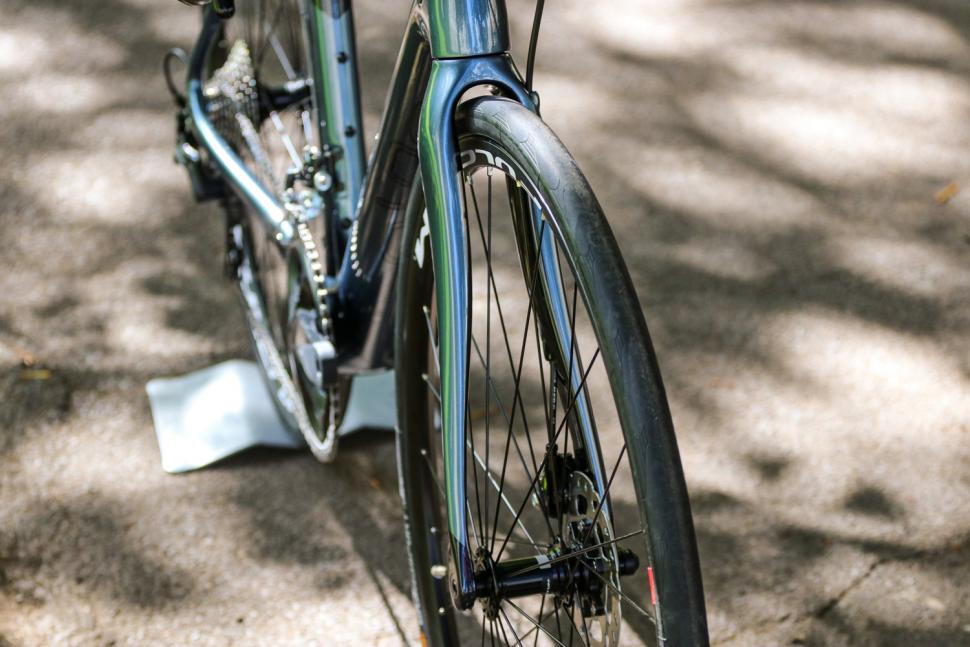
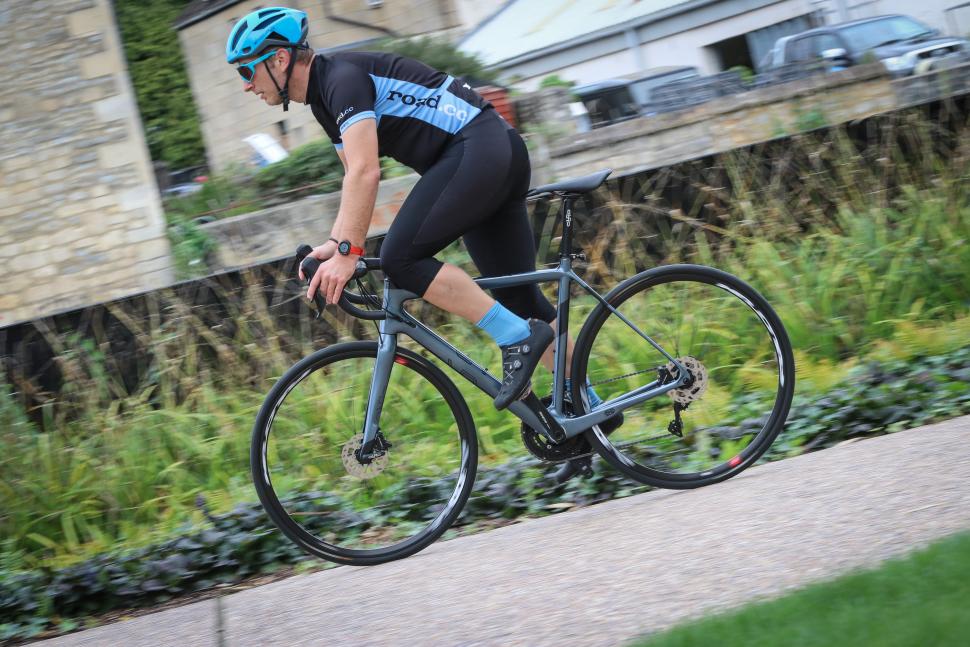


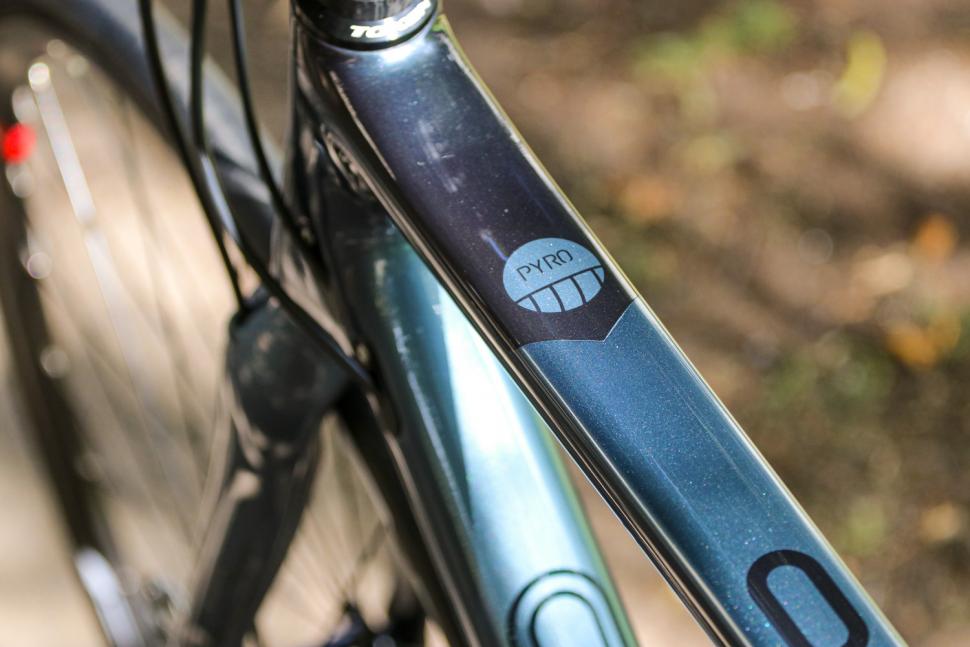

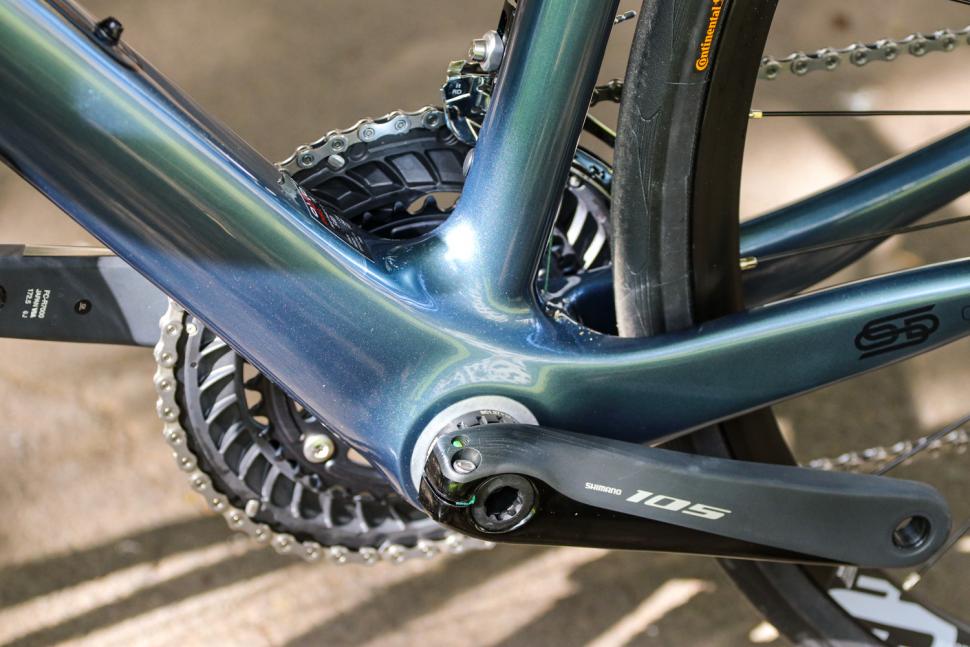

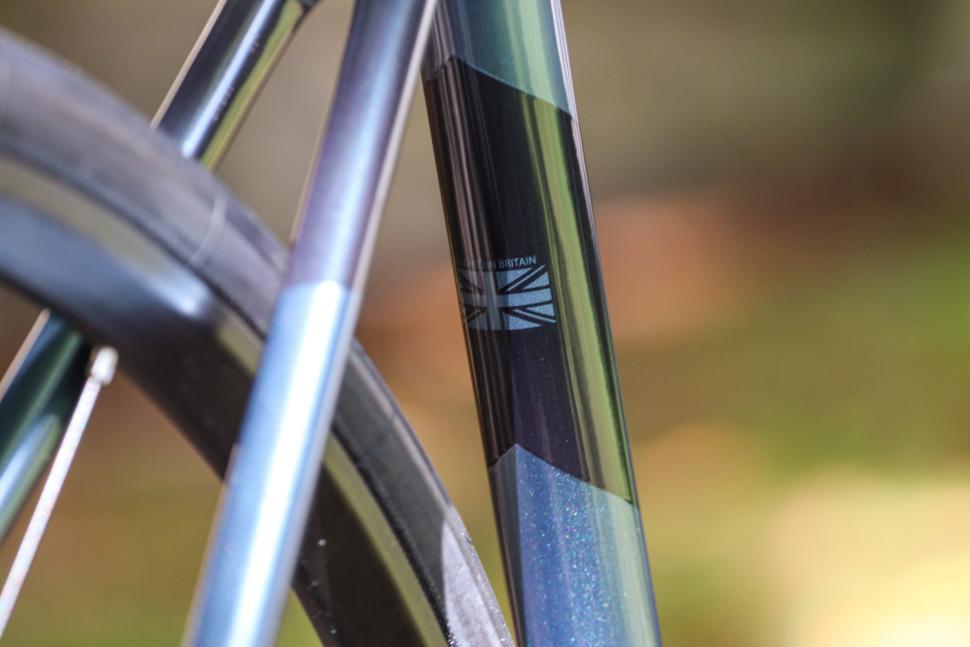

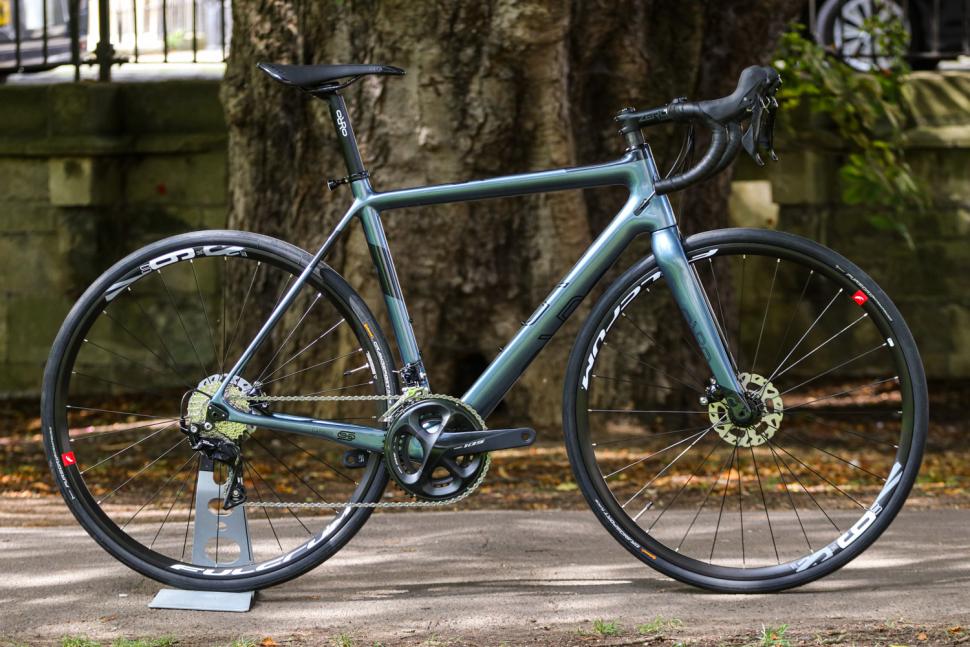




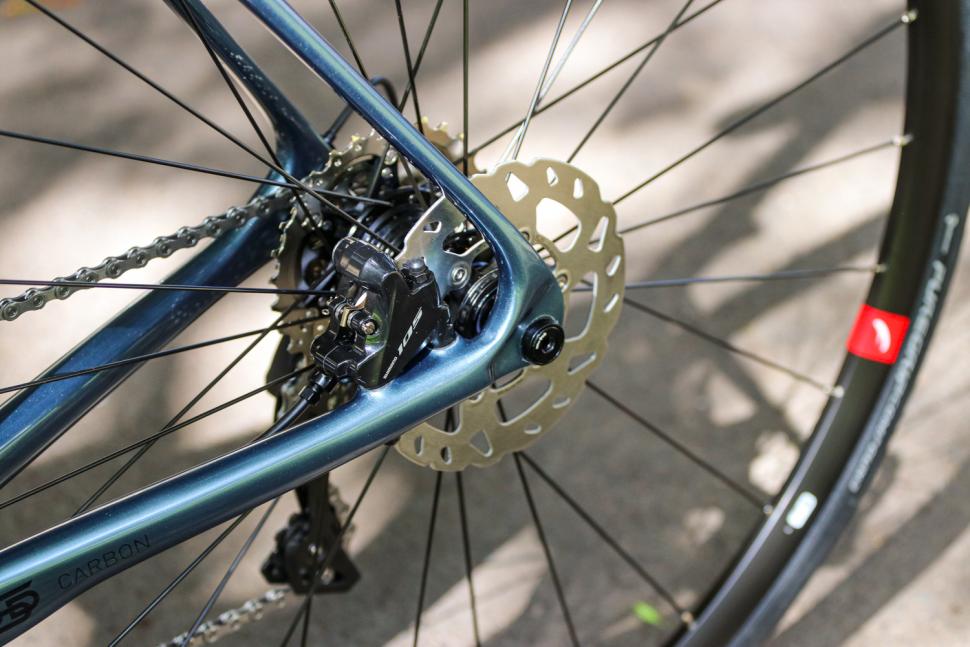

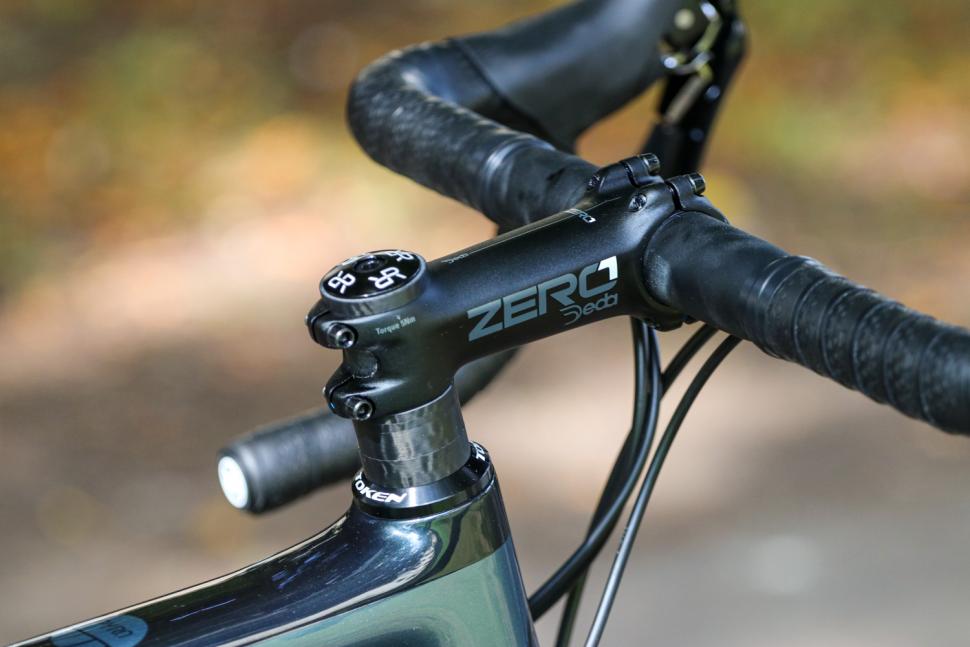







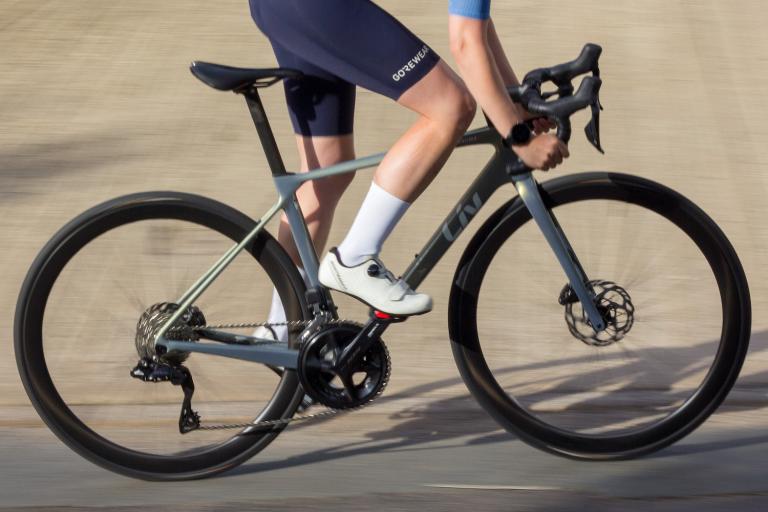
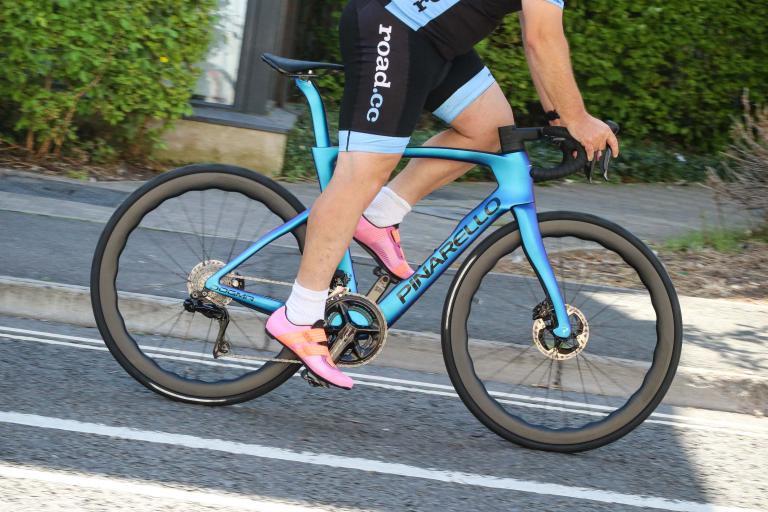
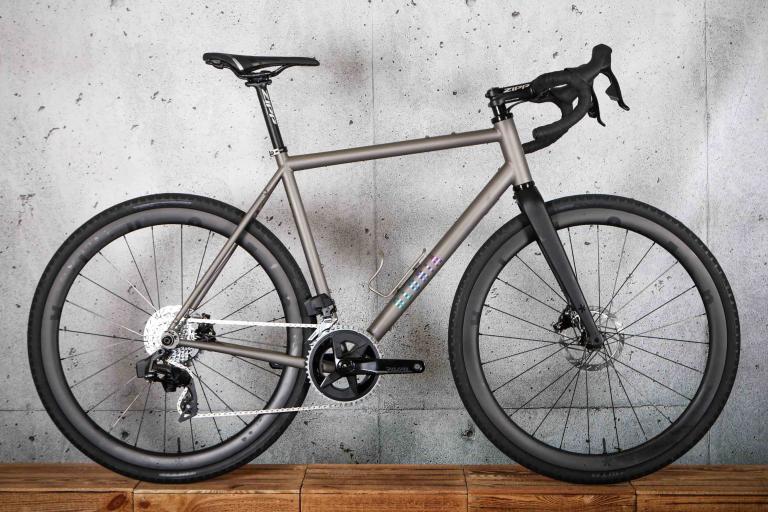
Add new comment
2 comments
Orro seem like an interesting brand. Did you guys ever get round to reviewing the Venturi? I'm intrigued by one, but want to know if it's worth the money!
Love everything about the bike. Understated colour and smart package.
Wheels upgraded and ready to rock